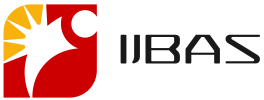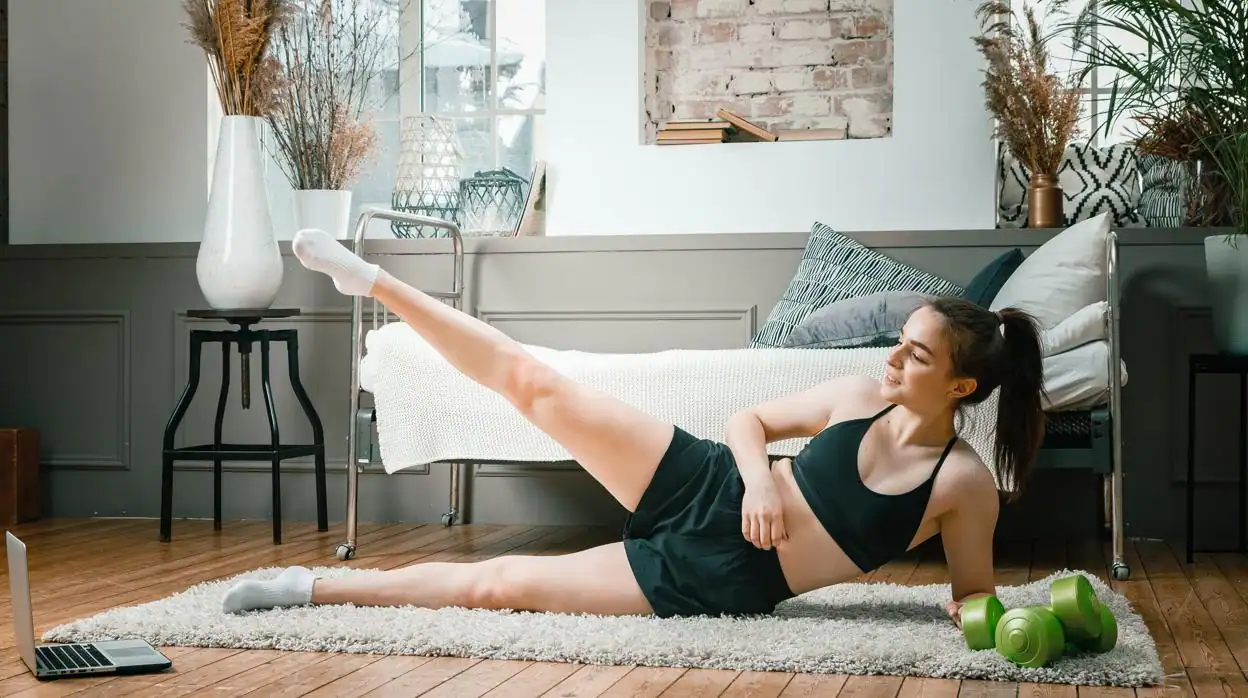With the onset of the COVID-19 pandemic and subsequent lockdowns, many have discovered the possibility of transforming their own homes into gyms. Utilizing household items, one can perform full-body workouts comparable to those done in a traditional gym setting. Lucia Pérez-Salas Ochando, a licensed graduate in Physical Activity and Sport Sciences, proposes a medium-difficulty workout routine consisting of two warm-up exercises and six strength exercises, requiring only a chair and the desire to train. Through these examples, the aim is to perceive home fitness not just as exercise but as a holistic experience of self-care and empowerment.
Warm-Up
1. Spinal Mobility
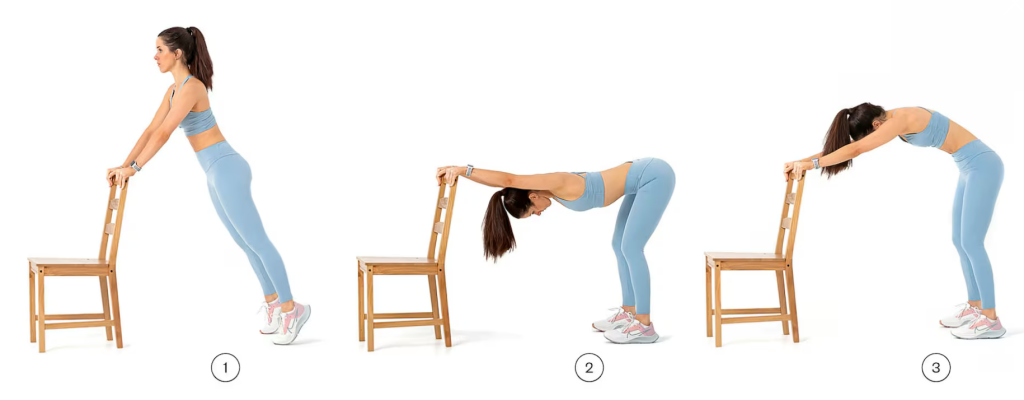
Instructions:
- Begin in a nearly vertical position with the body in a straight line, hands resting on the chair, and toes touching the ground.
- Initiate a wave-like movement from the neck to the lumbar area, ending in a parallel position to the ground with shoulder and lumbar extension.
- Start the movement from the hips, rising in a wave-like motion, vertebra by vertebra, mobilizing the entire spine back to the initial position.
2. Hip Mobility
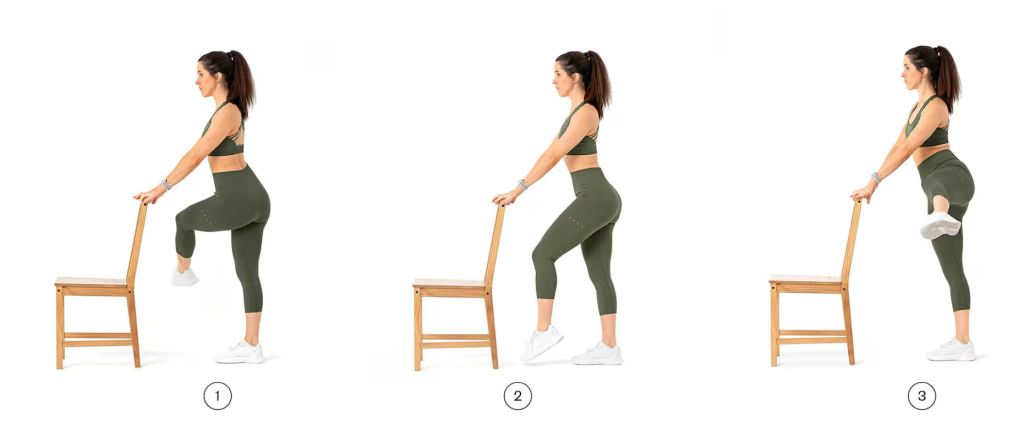
Instructions:
- Start from a vertical position with both hands on the highest part of the chair. Initiate leg abduction from this position.
- The mobile leg will descend towards the hip.
- Subsequently, perform abduction to the opposite side, executing lateral swings akin to a pendulum. This dynamic movement enhances hip mobility by alternating abduction and adduction of the legs.
Strength Session
1. Squats
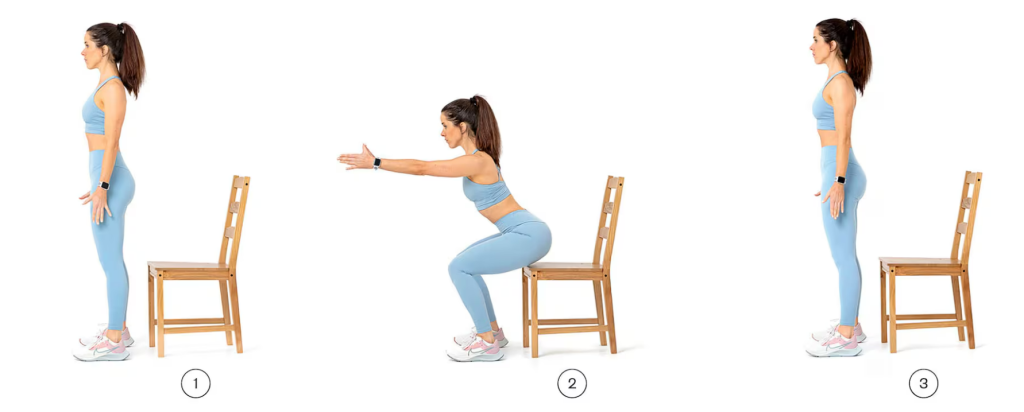
Instructions:
- Begin in a vertical position with feet shoulder-width apart.
- From this position, simultaneously flex the hips, trunk, and knees, lowering the body to a seated position on the chair. Lean slightly forward, maintaining a neutral spine and active core to distribute the load and increase exercise difficulty.
- After lightly touching the chair while engaging the quadriceps, return to the initial position.
Main Muscles Engaged: Quadriceps, hamstrings, and glutes.
2. Push-Ups

Instructions:
- Place hands on the edges of the chair, directly beneath the shoulders, with the body in a straight line and the core engaged.
- Descend by bending the arms, bringing the body towards the chair. Hand placement should align with the chest and elbows at a 45-degree angle relative to the shoulders.
- Push back up to the starting position.
Main Muscles Engaged: Chest, anterior deltoids, and triceps.
3. Mountain Climbers
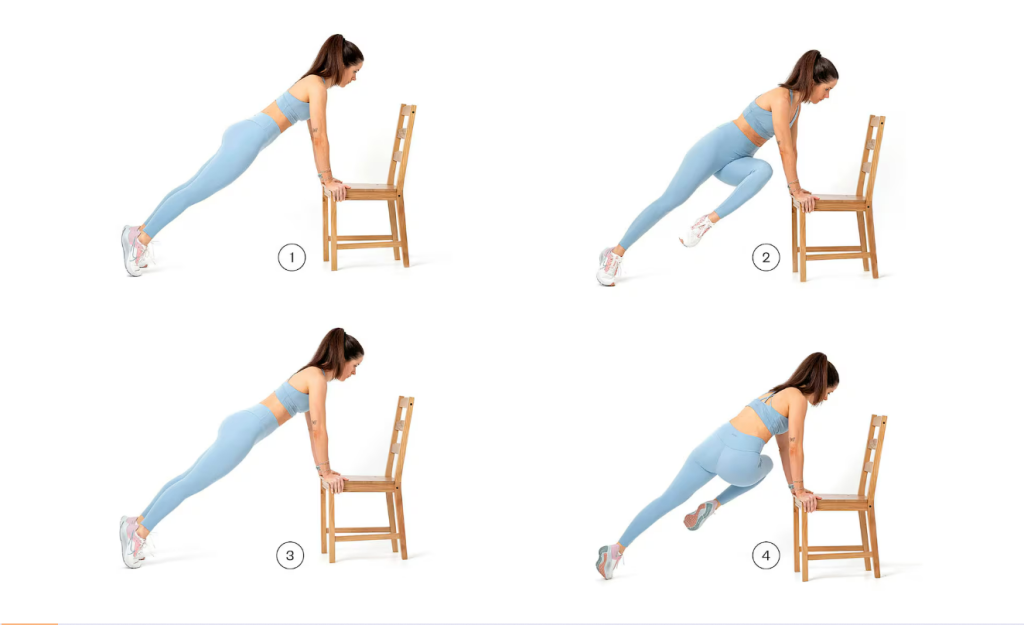
Instructions:
- Assume a plank position on the chair with hands beneath the shoulders and arms locked out, engaging the core, slightly tilting the pelvis backward, activating the glutes, and keeping the ribs closed.
- From this position, dynamically bring one knee towards the opposite arm.
- Return to the starting position.
- Repeat with the opposite leg. To increase difficulty, increase the speed of the exercise, enhancing stabilization and engaging the entire core and shoulders.
Main Muscles Engaged: Rectus abdominis, obliques, transverse abdominis, legs, and shoulders.
4. Chair Step-Ups
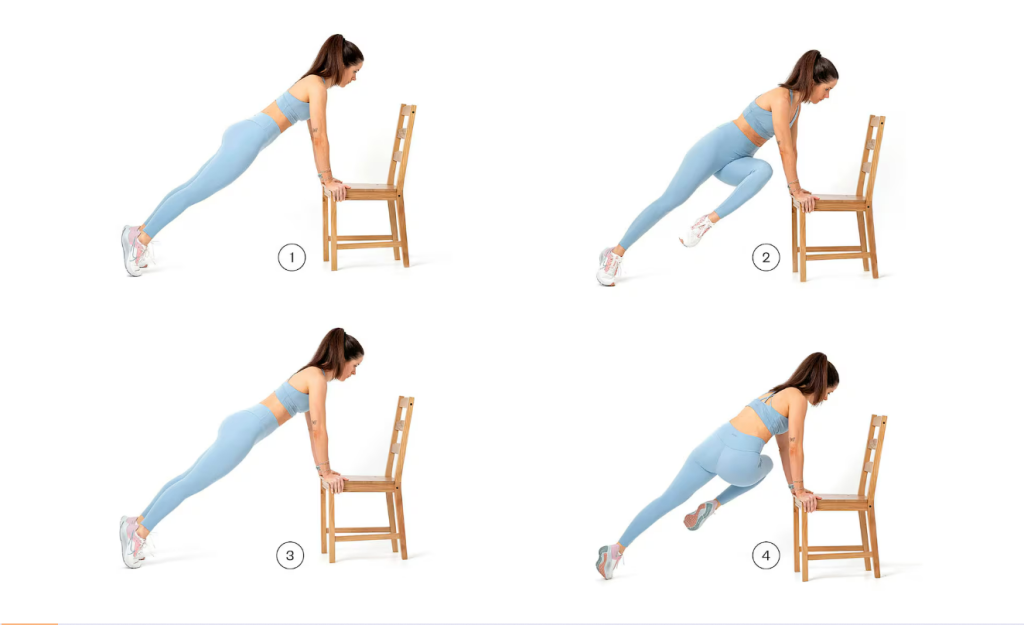
Instructions:
- In this exercise, the chair serves to increase difficulty. Begin on the floor and place one foot on the chair.
- Pushing through the foot on the chair, lift the other leg onto the surface.
- From the top position, lower the leg back down, controlling both the concentric (upward) and eccentric (downward) phases to increase difficulty.
Main Muscles Engaged: Quadriceps, hamstrings, glutes, and calves.
5. Tricep Dips on Chair
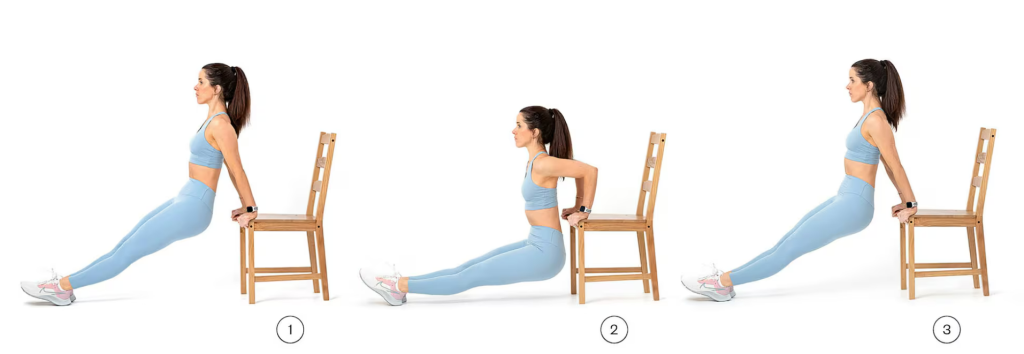
Instructions:
- Sit on the edge of the chair with hands placed shoulder-width apart and feet on the ground. Slide off the chair, supporting the body weight with hands and feet.
- From this position, perform a vertical arm flexion, ensuring the shoulders remain aligned and the scapulae engaged, pushing upward to prevent excessive trapezius activation.
- Once descended to 90 degrees, extend the arms back to the starting position. Adjust the difficulty by bending or straightening the knees.
Main Muscles Engaged: Triceps and shoulders.
6. Chair Glute Bridges

Instructions:
- Utilize the chair to increase the range of motion. Lie on your back with feet resting on the chair’s edge, ensuring a 90-degree knee flexion.
- Perform a hip thrust to achieve a diagonal alignment between shoulders, hips, and feet. Maintain core engagement throughout, preventing hyperextension of the lumbar spine. Arms should be positioned around the torso, aiding in hip elevation.
Main Muscles Engaged: Glutes and hamstrings.
Conclusion
Transforming your home into a gym is not only feasible but also rewarding. With simple equipment like a chair and determination, one can perform effective workouts targeting various muscle groups. By incorporating mobility exercises, strength training, and thoughtful modifications, individuals can maintain their fitness levels and even surpass their gym routines. Remember, fitness is not just about physical exertion but also about self-care and empowerment, making each workout a ritual of holistic well-being.
